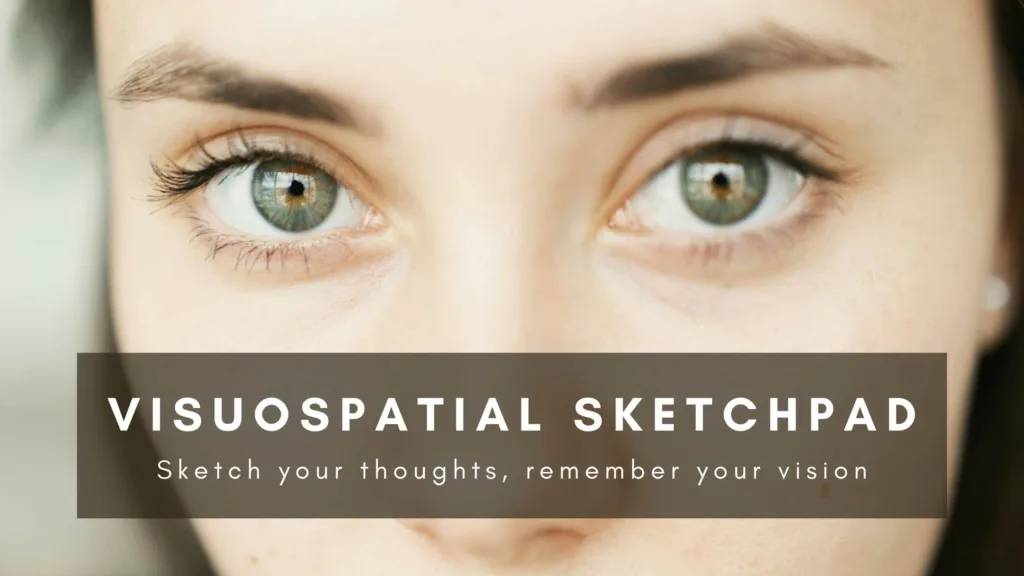The human brain is amazing and can do many different things that help us understand and move around in our world. One important part of this ability is called working memory, which holds and handles information for a short time. A key part of working memory is the visuospatial sketchpad. This article will explain what the visuospatial sketchpad does, how it works, and why it is important.
What is the Visuospatial Sketchpad?
The visuospatial sketchpad is one part of Alan Baddeley’s model of working memory, which also includes three other parts: the phonological loop, the episodic buffer, and the central executive. The visuospatial sketchpad specifically handles visual and spatial information. This means it helps us remember and work with what we see and how things are arranged in space.
For example:
- When you close your eyes and imagine your bedroom, you’re using the visuospatial sketchpad to create that picture in your mind.
- When you find your way through a city using a map, the visuospatial sketchpad helps you understand the layout and figure out where to go.

Functions of the Visuospatial Sketchpad
Functions of the Visuospatial Sketchpad (In Easy Words)
1. Mental Imagery
It helps us create and work with pictures in our minds. For example, when you close your eyes and imagine what your bedroom looks like, you’re using this part of your brain.
2. Spatial Navigation
It helps us figure out how to get from one place to another. For example, when you think about the route to your friend’s house or remember the layout of your school, this part of your brain helps you navigate.
3. Object Location Memory
It helps us remember where we put things. For example, when you remember where you left your keys or where each piece is on a chessboard, you’re using this part of your brain.
4. Visual Pattern Recognition
It helps us recognize and remember shapes and patterns. For example, when you solve a jigsaw puzzle, read a map, or identify a familiar face, this part of your brain helps you see and remember the patterns.
Mechanisms of the Visuospatial Sketchpad
The visuospatial sketchpad works through two main parts: the visual cache and the inner scribe.
1. Visual Cache
- What It Does: Stores what we see, like colors and shapes.
- Example: When you remember the color of your friend’s shirt or the shape of a logo, the visual cache is helping you.
2. Inner Scribe
- What It Does: Handles where things are and how they move.
- Example: When you think about how to arrange furniture in your room or keep track of a ball in a game, the inner scribe is at work.
Practical Applications
It is very useful in many everyday activities and different areas of work. Here are some simple examples:
1. Learning
When studying geometry or art, students use the visuospatial sketchpad to understand shapes and pictures in their minds. It helps students learn better by making it easier to picture and understand information.
2. Driving and Finding Your Way
When you drive and follow a map or GPS, the visuospatial sketchpad helps you remember the roads and directions. It makes it easier to get where you need to go without getting lost.
3. Playing Sports
Athletes use the visuospatial sketchpad to keep track of the ball and other players on the field.It helps athletes play better by knowing where everyone is and what to do next.
4. Video Games
Gamers use the visuospatial sketchpad to remember game maps and the location of items. It improves gaming skills by helping players navigate and strategize.
5. Creating Art and Design
Artists and designers use the visuospatial sketchpad to imagine and plan their work before they create it. It helps create detailed and accurate art and designs.
6. Daily Tasks
When you remember where you put your keys or how to arrange furniture in a room, you use the visuospatial sketchpad. It makes everyday life easier by helping you organize and find things.
7. Building and Planning
Architects and engineers use the visuospatial sketchpad to picture buildings and make detailed plans. It helps create accurate and well-designed structures.
8. Memory Tricks
Using techniques like imagining items in specific places to remember them better (like picturing groceries on a mental shopping list). It improves memory by making it easier to recall information.
The visuospatial sketchpad is an important part of how our brain works. It helps us see and understand things like where objects are and how to move around. We use it every day, from simple tasks to solving difficult problems. As scientists learn more about how it works, we can expect new ways to help people learn, understand the brain, and use technology better.

Pingback: Central Executive Psychology: Control center of your mind